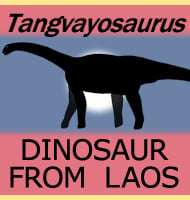Bothriospondylus
In Depth Bothriospondylus has had a long taxonomic history as a sauropod dinosaur yet today the genus is regarded as dubious. This is because the type material of Bothriospondylus, really just a few vertebrae, has been so badly eroded that it is impossible to identify any unique features for the genus. This makes it impossible … Read more
